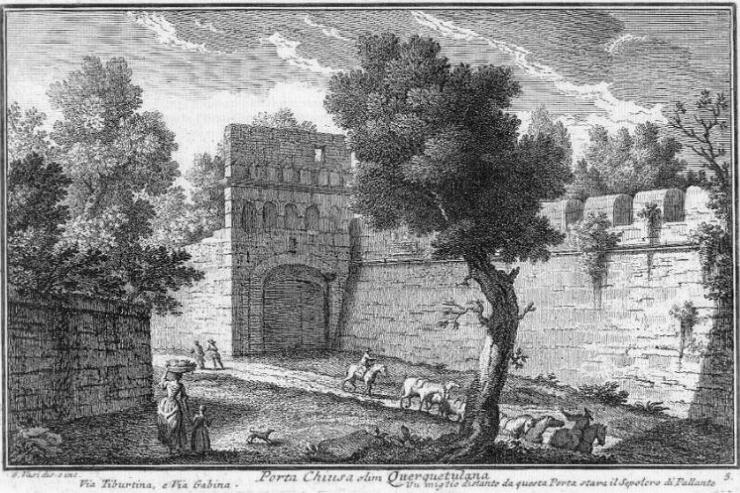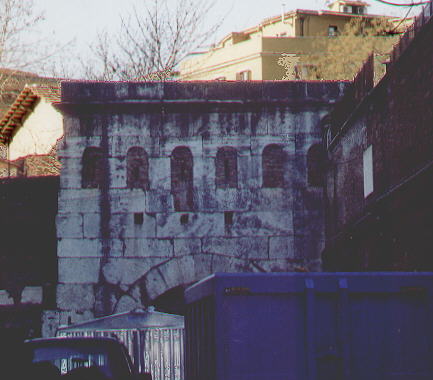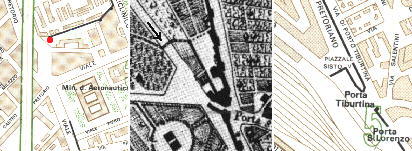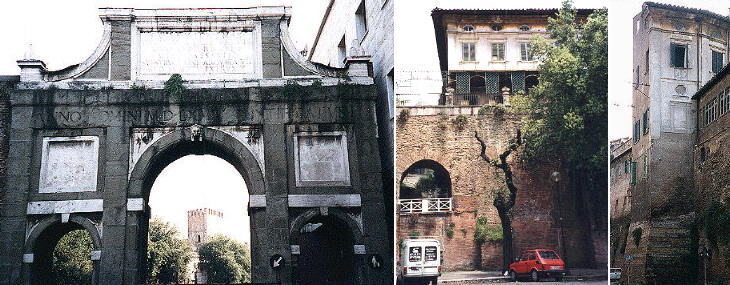  Porta Chiusa (Book 1) (Rione Monti) In this page:
Porta Chiusa means closed gate because the gate was most likely closed immediately after the fall of the Roman Empire. Vasi calls it Querquetulana, (quercia=oak) which is the name of a gate of the most ancient (inner) walls of Rome. The gate is located at the junction between the walls of Castro Pretorio and the walls built by the emperor Aurelianus and it allowed the pretorians a direct exit from Rome. Two short roads connected the gate to Via Tiburtina and Via Nomentana.
Unfortunately today the gate is hidden by modern buildings and it can only be seen by walking into the courtyard of a building in Via Monzambano (red dot in the little map here below).
The Walls between Porta Chiusa and Porta S. Lorenzo Most of the walls between Porta Chiusa and Porta S. Lorenzo were pulled down to favour traffic towards the vast new area built beyond the walls. Towards Porta S. Lorenzo the walls are apparently duplicated because the aqueduct restored by Sixtus V (map in the center) runs parallel to them.
To celebrate the restoration of the aqueduct a triumphal
arch was erected with the lion, mountains and stars of Sixtus V (see also
Porta
Furba and Fontana Felice). The picture
shows also Palazzina Gentilini, an elegant small villa built at the beginning
of the XVIIIth century making use of the double walls.
Go
to |
All images © 1999 - 2003 by Roberto Piperno. Write to romapip@quipo.it




